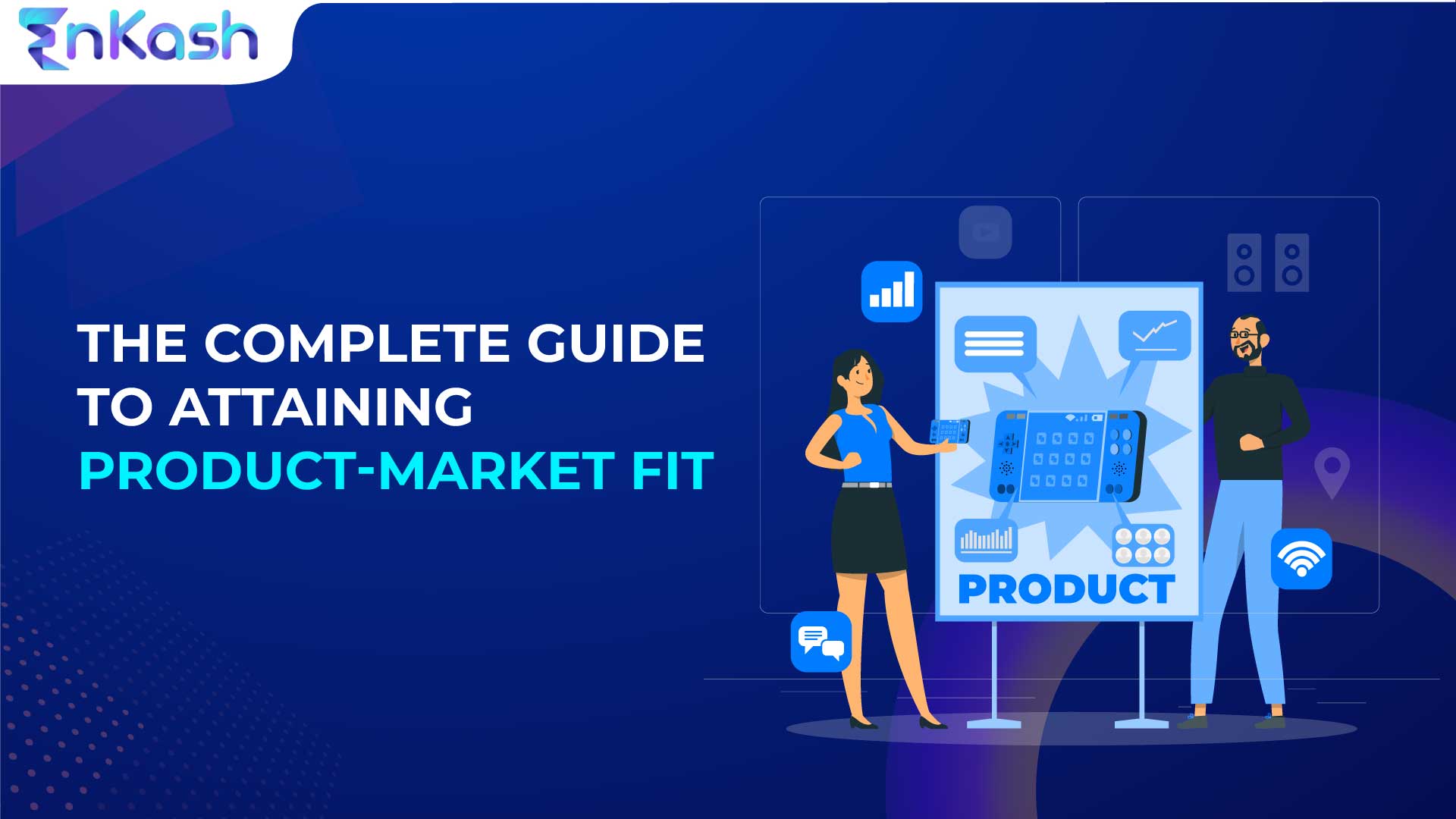At the core of any undertaking lies a problem as the initial impetus. It is highly likely that you encounter this particular issue on a daily basis. Identifying and addressing this problem is crucial for the success of the endeavor.
Your objective is to identify a solution for the problem at hand, which entails creating a product that effectively addresses the issue, as well as assembling a suitable team capable of developing said product.
At some point, it becomes necessary to reflect and question if one is heading in the right direction and if their contributions hold value in the market. It’s crucial to ascertain whether or not the market is aware of one’s value.
This is the point where the concept of product-market fit becomes relevant.
What is the significance of product-market fit?
One might argue: ‘What’s the point?
I regularly use products that do not conform to product-market fit definition.‘
While that may be accurate, there are several successful companies producing useful products that may not necessarily fit this mould.
It’s important to note that the concept of product-market fit is predominantly utilized by the realm of venture capital.
The objective is to assist businesses in achieving this fit as their aim is not merely to seek out ‘good businesses’.
Instead, they aspire to identify companies with the potential to experience explosive and exponential growth that can shake up established industries, transform markets, and generate significant returns for their limited partners.
One could suggest that innovation teams should share similar objectives, particularly in relation to a portion of their wider innovation portfolio.
Suppose you hold the belief that your industry or organization could face disruption, and you concur that such disruption may involve a rapidly expanding startup taking over your market share. In that case, it would be wise to evaluate your initiatives using a framework akin to that of startup investors.
In essence, you function as the venture capitalist of your innovation team.
What is a Market?
To define product-market fit accurately, it is essential to have a precise understanding of what is meant by the term “market.
“We find Bill Aulet’s description of a market to be apt. According to him, a market exists when:
- Customers within it tend to purchase similar products.
- The customers share a common buying process.
- They have similar expectations regarding product value.
- They communicate with each other, creating opportunities for a product that meets their needs to generate organic word-of-mouth growth.
The market holds immense significance, and it constitutes one of the pivotal factors that a shrewd venture capitalist takes into account while assessing a prospective opportunity.
The reason behind this is quite compelling- a large market makes every other aspect of your venture comparatively more manageable.
So, what exactly does “product-market fit” mean?
Product-Market Fit definition says it pertains to how well a product from a particular brand can cater to the existing market’s needs by providing a sufficient quantity of high-quality products to meet consumer demand.
To put it differently, you have attained product-market fit when you have provided satisfactory responses to the following inquiries:
- Who is your customer, and what is the issue they are encountering
- What is your proposed solution to tackle the problem?
- How do you intend to implement the solution while delivering evident value to both your brand and the customer?
Once you have appropriately addressed these questions, you can safely claim that you have set proper product market alignment.
What are the ways to assess product-market fit?
After understanding the significance of product-market fit, you may be curious about discovering it.
Hence, the question arises: what are the ways to identify that you have achieved product-market fit?
There is no established set of growth metrics that can be used to measure product market fit. However, several prosperous companies that have achieved product market fit attempt to address queries like:
- Is there a growing demand for the product?
- What is the customer retention rate, and are users coming back to use the product repeatedly?
- Are customers referring the product to their network, friends, or family?
- Is the customer acquisition cost lower than the customer lifetime value?
- Is the product generating positive reviews, feedback, and engagement?
- Is the product gaining market share and outpacing competitors?
You may not have clear-cut growth metrics to gauge product-market fit, but it’s useful to be aware of indications that suggest product-market fit has been achieved. Nonetheless, it’s advisable to monitor specific measurable indicators.
Signs and metrics of PMF
Here are some of the most prevalent indications that your product has achieved product-market fit:
- A fast growth rate, indicating strong demand for the product.
- High user engagement, conversion rates, and sales demonstrate the product’s appeal and value proposition.
- Free users adopting and actively using the product.
- Users converting to paid subscribers after the trial period.
- Fast sales cycles, indicating a clear understanding of the product’s value proposition.
However, these signs only provide an overview and should be complemented by both qualitative and quantitative metrics for a better evaluation. The most commonly used metrics are listed below:
Customer Retention Rate

Customer Retention Rate (CRR) is a metric that indicates the percentage of customers who continue to use a product after making a purchase. It measures the ability of a product to retain its customers over a specific period.
If the percentage of users who continue to use your product after purchasing it is close to or greater than 50%, it is a good indication that you have possibly attained product-market fit.
CAC/CLV Ratio
The ratio of customer lifetime value to customer acquisition cost (CLV:CAC) is a metric that reveals how efficient your business operations are.
For instance, if your CLV:CAC ratio is 3:1, it indicates that you earn three rupees for every rupee spent.
Additionally, this ratio aids in identifying the most valuable customers of the company. By focusing on these customers, the business can generate more revenue than the costs incurred in acquiring them.

If the ratio of customer lifetime value to customer acquisition cost (CLV:CAC) is 3:1 or greater, it is considered an excellent indicator of product-market fit.
Net Promoter Score
Net Promoter Score, or NPS, is a metric used to measure customer loyalty and satisfaction. It helps businesses understand how likely their customers are to recommend their product or service to others.
NPS is determined by surveys that categorize respondents into three groups: promoters, passives, and detractors. Respondents are asked to rate their likelihood of recommending the product or service on a scale of 0-10.
To calculate the NPS, you subtract the percentage of detractors (those who rated 0-6) from the percentage of promoters (those who rated 9-10). The resulting score ranges from -100 to +100.
A high NPS indicates that a company has a high level of customer satisfaction and loyalty, and is likely to have achieved product-market fit.
Key Factors for Achieving Product-Market Fit
Explore the essential factors that contribute to achieving product-market fit, a crucial step for startup success:
Minimum Viable Product (MVP) Characteristics
The Minimum Viable Product (MVP) must demonstrate these five characteristics:
- It should be demoable
- It should be self-serviceable
- It should have the main features of the product
- It should have mechanisms to collect feedback
- It should have mechanisms to show user engagement
Landing page
To effectively communicate the value of your product and convert visitors into customers, landing pages are essential. These pages should present your product in a clear and direct way.
Here are the key components that every SaaS landing page must-have:
- A header that is concise and provides a clear call-to-action that conveys your unique selling proposition.
- An initial demonstration of social proof, either from customers or publications.
- An introduction that addresses the audience’s pain points and problems to reassure them that you can provide a solution.
- A showcase of 3-5 points that explain how the product can resolve their issues.
- Reinforcement of the product’s benefits, highlighting its unique features and advantages.
- Engagement points, such as explainer videos or forms, to encourage interaction and establish credibility.
- Additional social proof, including testimonials, that illustrate the results achieved by individuals and businesses.
- A powerful statement for your final call-to-action, which is the last chance to convert visitors into customers.
Marketing Automation Platforms
Marketing automation platforms are designed to handle repetitive marketing tasks across different channels. These tools can help you streamline, automate, and measure your marketing campaigns, while offering several benefits, such as improved efficiency, scalability, and personalization. By utilizing marketing automation platforms, you can drive user engagement and optimize your marketing efforts.
PPC Channels
Sponsored Banners: Advertise your product or service on relevant websites and online communities within your niche.
Google Ads: Create multiple ad sets with various targeting options like interests, age groups, devices, and audiences to optimize your campaign.
A/B Testing: Test different versions of your ads by varying the copy, images, or other elements. Evaluate the performance of each variant and keep the most effective ones.
Also Read: How Does Fintech Support Financial Operations?
Over to you!
Product-market fit is crucial to ensure that your solution resonates with enough people to sustain your business. Whether you operate a vertical or horizontal SaaS, it’s important to determine if you’ve achieved product-market fit. In addition to identifying the signs of product-market fit, it’s important to have specific metrics to measure it.














